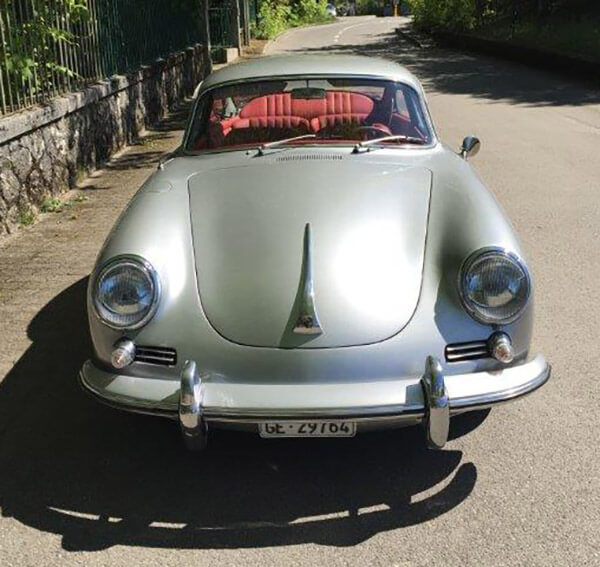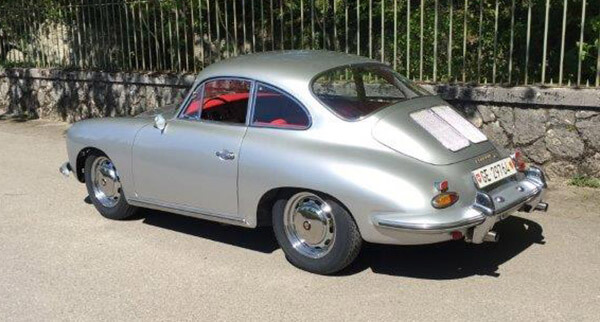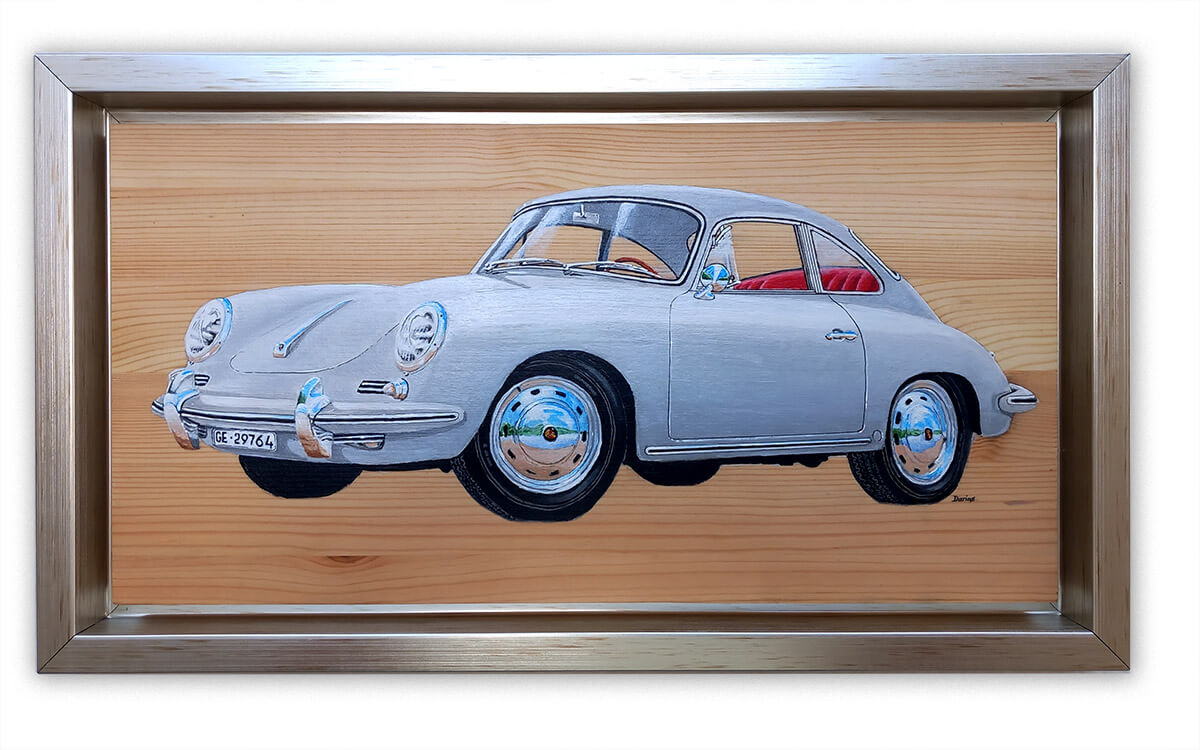Recently I had the pleasure of creating a painting for this fine car’s owner in Geneva. The curved shape of the Porsche is a work of art in itself. Below is a quick photo-journal showing the art process. But first; a little history.
The Porsche 356 is considered a landmark in car design. It was the result of a simple idea by Ferdinand Porsche, designer of the VW Beetle: The 356 was essentially a reimagining of the Beetle as a sports car. (You can read more about the origins of the 356 in this essay by Betty Jo Turner).


Fred Heiler, writing in the New York Times a few years ago, summed up the simplicity of the 356:
Utterly dependable unless they have been severely neglected, the Porsches that preceded today’s 911 model are straightforward designs that a competent home mechanic can readily maintain. Nimble handling and responsive controls make them a treat to drive…..
The significance of the Porsche 356 is described by Jim Donnelly on the Hemmings website thus:
Immortal. A rolling altar at the midst of any automotive collection, a redefinition of the term ”sports car” that wears Stuttgart’s black, red and yellow shield. It’s an automobile that’s the absolute, unwavering success of uniqueness and unbreakable function. This is a historic Porsche, revered, reliable and absolutely recession-proof as an investment.
And Todd Fischer, also on the Hemmings website, says:
It’s an iconic car. Every Porsche built since its day has duplicated the 356C in some way. Even if you look at the shape of the rear window on a 996, I think you can still see a 356C there.



You can see, in this Fiat 130 Coupe blog-post from 2020, a more detailed journal of the development of a car painting.
Go to my portfolio page to see more of my classic car paintings.